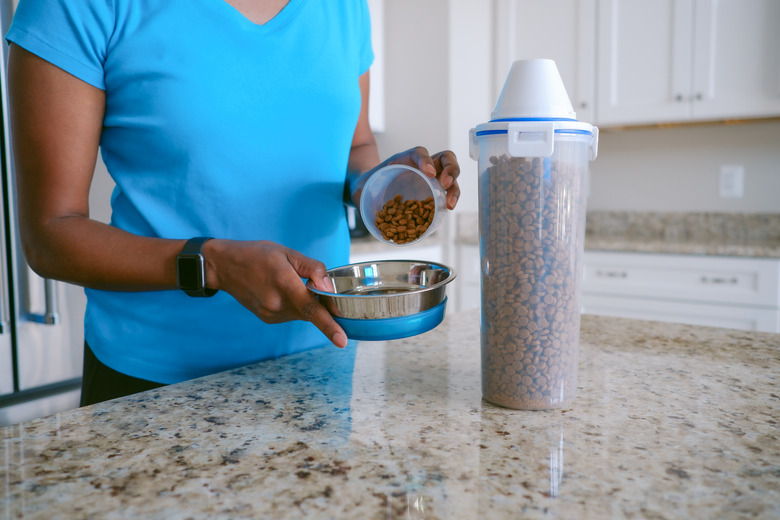How To Keep Mold Out Of A Dog Food Container
If you suspect your dog's food or food container has mold, get the bag, bowl, or container away from your pet immediately. Mold is a sign of dampness or moisture that could have occurred before you brought the food home, or it may have grown in your house, garage, or wherever you keep the dog food storage container. Reviewing how to keep your dog food mold-free will help keep your pet safe and healthy.
What is mold?
What is mold?
Mold is a fungus that grows when a specific set of circumstances exist, usually including a dark, damp, warm location. It grows on decaying organic matter, not surfaces such as plastic or metal. It can spread to those surfaces as it grows on itself, but you won't find mold on a stainless steel table, for example, unless there's organic matter on the table.
What causes mold?
What causes mold?
When you combine dog food, moisture, and darkness, you're basically creating a high school science project gone wrong. You don't need to have water come into contact with the dog food container, bag, or food. If you keep the container in an area where there's lots of humidity, that might be enough to cause mold. You're more likely to have a mold problem in a warm, damp environment than in a cold (especially freezing) area, such as a garage.
Is mold harmful?
Is mold harmful?
Mold can make your dog start vomiting, experience diarrhea, become feverish, and have muscle tremors and seizures. Left untreated, it can kill a dog. That's why it's important to check your dog's water and food bowls before you leave on a trip for a few days. If you use a self-feeding device that releases food as your dog eats, open it and go through the device thoroughly before you leave for more than a day or so.
Make sure your thermostat is set at a cool enough temperature to prevent your house from becoming warm and humid. Ask your vet, groomer, or professional pet sitter for a temperature recommendation. When you get home or every few days while you're at home, check the food and container for mold.
How to spot mold
How to spot mold
Keep a small amount of your dog food in a plastic bag in your refrigerator or other area where it won't get discolored so you can use it as a sample to check against your main food source when looking for mold. Mold is often bluish, greenish, or black. If you see any spots on your dog's food, it's best to throw it out. Put your hand in the dog food to feel if it's dry or if it feels cool or moist. Crush some in your hand to see if it's dry and hard or if it's spongy.
Don't forget that you can take a picture of the dog food with your smartphone and send it to your vet, pet sitter, groomer, or even the food company.
How to prevent mold on dog food containers
How to prevent mold on dog food containers
- Use a cleaning solution. You can keep mold out of a dog's food container by cleaning
it from time to time (usually when it gets low or it's empty). Empty the
container and clean it with a mild cleaning solution. Try a few tablespoons of bleach,
baking soda, or vinegar with a gallon of hot water. - Rinse and dry thoroughly. Make sure to rinse the dog food bin thoroughly with hot
water. If your dog smells soap or bleach or vinegar on her food, she might
reject it. Obviously, the key to keeping mold out of the container is to make
sure it's completely dry before you put any more food back inside, especially if
you're going to seal the container. - Be careful where you place the container. Don't leave a food container or food bowl near a heating
vent or a window that streams sunlight onto it. This means that when you get a
new dog or move to a new place, you'll need to put some thought into where you're
going to put your dog's bowl(s). Dogs like routines, and moving bowls can stress them. - Check the food. Check the food before you put it in. If the bag or food gives
even the hint of being damp, either toss it or put it someplace where it can dry.
Check with your vet or the food maker to see if it's OK to use hard food that has
gotten damp — you probably shouldn't. Maybe the exterior of the bag got a
little wet but the food hasn't. Maybe the food is only cold because you had it
in the car near an air conditioning vent. - Keep food fresh. Keep food containers sealed airtight if possible and keep
the food in its original packaging for added protection. Remember that the
manufacturer knows the food will be in the bag for weeks or more and uses safe
materials to keep the food fresh.
